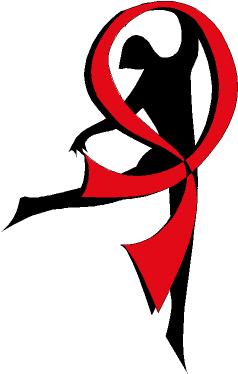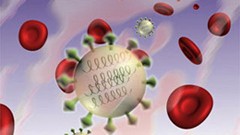| |
| |
|
| |
  |
| |
|
| |
|
 Aids
Latest News Aids
Latest News
Click Here ::*
 |
| |
| |
People have
been warned about HIV and AIDS for over twenty years now. AIDS has
already killed millions of people, millions more continue to become
infected with HIV, and there's no cure - so AIDS will be around for a
while yet. However, some of us still don't know
exactly what HIV and AIDS actually are. |
| |
|
| |
Human immunodeficiency virus (HIV)
and acquired immunodeficiency virus (AIDS) is a global problem.
In December 2002, the Joint United Nations Programme on HIV/AIDS (UNAIDS)
and the World Health Organization (WHO) reported that there were over
42 million people living with HIV or AIDS around the world. 38.6
million of these are adults, 19.2 million are women and 3.2 million
are children under the age of 15. Five million new infections with HIV
occurred in 2002 of which 4.2 million were adults, 2 million were
women and 800,000 were children. A total of 3.1 million people died of
HIV/AIDS related causes in 2002.
Although many think of HIV as an infection of gays and IV drug
users, most of the cases worldwide are due to sexual contact between a
man and woman. New cases are occurring most rapidly in the developing
nations within Africa, Asia, and South and Central America.

Sub-Saharan Africa has the highest number of individuals living
with HIV/AIDS. That number is 29.4 million people. It is followed by
South and South-East Asia with 6 million people. In North America,
there are nearly one million people, 570,000 in Western Europe and
over one million in Eastern Europe and Central Asia. The number of
HIV/AIDS individuals in Australia and New Zealand has remained
constant since 2001 at 15,000 people. In Latin America, there are over
one million people and 440,000 in the Caribbean living with HIV/AIDS.
East Asia and the Pacific have over one million people living with
HIV/AIDS and North Africa and the Middle East have 550,000 people.
In industrialized countries, antiviral medications have greatly
improved the outcome for people living with HIV/AIDS. However, 95
percent of people with HIV/AIDS live in developing countries and have
little or no access to these medicines, and less that 10 percent of
people with HIV/AIDS have access to symptomatic care for opportunistic
infections. Unaffordable prices for drugs is the most common reason
for limited access, but also a shortage of capacity and trained health
care providers are obstacles in many countries. |
| |
|
| |
People who live with HIV face many
difficulties such as:
- cost of medications and medical care to treat their illness
- assistance required to help with activities of daily living and
- prejudice, fear, and scorn by many people just because they are
HIV-positive
The Declaration of Commitment on HIV/AIDS adopted by the world's
governments at the Special Session of the United Nations General
Assembly on HIV/AIDS in June 2001, established time-bound targets to
which governments and the United Nations are accountable. |
| |
|
| |
HIV/AIDS
The letters "AIDS" stand for Acquired Immune Deficiency Syndrome.
"HIV" stands for Human Immunodeficiency Virus. |
| |
|
| |
The Cause
- The HIV virus is a germ that attacks certain types of white
blood cells in human blood.
- This virus attacks a person's immune system and damages their
ability to fight off some diseases.
- Without a functioning immune system to ward off other germs, the
person is vulnerable to several infections caused by bacteria,
fungi, other viruses, and malignancies. These may cause
life-threatening illnesses.
- Some of the most common illnesses are pneumonia, meningitis, and
tuberculosis.
- Individuals may also develop certain types of cancers such as
Kaposi's sarcoma, lymphomas, Hodgkin's disease, and multiple basal
cell carcinomas.
- Treatment of HIV can delay damage to the immune system and
progression to AIDS.
|
| |
|
| |
Symptoms
- Many people with HIV have no symptoms and may not realize they
are infected.
- Symptoms that occur with HIV are similar to those of other viral
infections. If you feel you are at risk for HIV, you should be
tested, regardless of whether or not you have symptoms.
|
| |
|
| |
How AIDS Is Spread
- Sexual intercourse (vaginal, anal or oral) with an
infected person
- Blood contamination (for example, sharing needles for
intravenous drug abuse)
- Mother to Child (during pregnancy, during birth, and
during breast feeding)
|
| |
|
| |
You Do Not Get AIDS From:
- Touching, social kissing, coughing, or sneezing
- Contact with eating utensils, water fountains, toilet seats,
telephones, typewriters, etc.
- Teardrops, saliva, or sweat
- Using facilities such as public swimming pools, restrooms, or
gymnasiums
- Being close to other people such as on a crowded bus, in a
classroom, or restaurant
|
| |
|
| |
Risks
- Infection results from a sexual relationship with an infected
person
- People who share needles while using street drugs are at
greatest risk of exposure and infections
No Known Cure
There is presently no cure for AIDS and at present no vaccine to
prevent AIDS |
|
|
|
Treatment
A number of antiviral drugs are available to treat HIV. The drugs
fall into three main classes:
- Nucleoside reverse transcriptase inhibitors
- Non-nucleoside reverse transcriptase inhibitors, and
- Protease inhibitors
These three classes of drugs attack HIV at different stages in
the cellŐs life cycle. People with HIV are given a combination of
drugs from different classes for maximum benefit. New drugs and
classes of drugs are emerging as research continues.
|
 |
|
| |
|
|
|
Prevention
- Protect yourself or your partner by using a condom during sexual
intercourse
- If you are a partner are at risk, avoid mouth contact with the
penis, vagina, or rectum
- Avoid all sexual activities which could cause cuts or tears in
the linings of the rectum, vagina, or penis
- If you have had unprotected intercourse with more than one
person and/or your sexual partner has had unprotected sex with more
than one person, have a blood test to see if you have been infected
with the AIDS virus.
- Do not share intravenous drug equipment
- Antiviral medications may be prescribed for unanticipated sexual
or injection drug use exposure to HIV. Treatment for the exposed
person must begin within 72 hours.
|
 |
| |
|
| |
Disclaimer:
This content is reviewed periodically and
is subject to change as new health information becomes available. The
information provided is intended to be informative and educational and
is not a replacement for professional medical evaluation, advice,
diagnosis or treatment by a healthcare professional. If you have or
suspect you may have a health problem, consult your healthcare
provider.
| |


